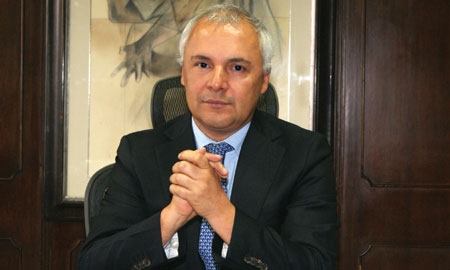Since 1999 Banco Agrario de Colombia (Colombia’s Agrarian Bank) has worked towards making banking services more available for all Colombian people.
After the financial crisis the country experienced in the early eighties and again in the late nineties – when the State had to privatize 24 credit establishments of the 104 that were active at the time – a general mistrust of the banking system arose in the Colombian people.
And not only that, a lack of trust in the future of the country’s economy also became constant among Colombians. Therefore, the Banco Agrario has had its work cut out for it. Its mission is not only to expand banking services around the country but also to rebuild the trust of the rural population in those services.
Mr. Álvaro Miguel Navas Patrón is the president of Banco Agrario, and the man responsible for some of the newest reforms made towards achieving those ends. “After the crisis, it was understood that the state shouldn’t have public banks because the risks were too high. But in the case of the agrarian sector, it was fundamental: if there wasn’t a public bank it would be very likely that Colombia’s rural areas, the ones affected by the armed conflict and where the state’s presence was weak, would develop very slowly in terms of bankarization”, explains Mr. Navas.
So the decision to create the Banco Agrario, previously called Caja Agraria, was made. After 14 years of existence it has 848 branch offices in all of Colombia, 720 of which are in small agrarian municipalities of 20,000 to 25,000 people. In fact, in 500 cases, the Banco Agrario is the only banking entity in those municipalities.
“We believe that giving people access to banking services is a fundamental instrument of economic integration and of productive and social development. Where there aren’t any banks there isn’t access to formal credit, and that results in informal networks run mostly by criminals that extort the population”, says Mr. Navas. Faced with this outlook, the Banco Agrario is determined to expand its presence even more throughout the country (it already covers 96 percent of the Colombian territory) to be able to give Colombian farmers the best possible credit conditions.
One way of doing that is by coming even closer to their potential clients. In rural areas, roads and public transportation aren’t exactly the best quality, which means clients sometimes have to travel for over an hour to reach the areas where the Banco Agrario has its branch offices. Mr. Navas is pushing forward a series of reforms based on the principle of proximity, to reduce considerably the distance between the bank and the client.
To achieve this they will program visits from their mobile forces and credit brigades, which will go directly to the client. All of this with the end objective of generating a credit culture in Colombia, which doesn’t exist today because banks aren’t nearly as accessible as necessary.
Another way the Bank is aiding the development of the Colombian people is by distributing the subsidies given by Families in Action, a program from the Social Prosperity Department. Housing is also one of its main concerns. According to Mr. Navas, the country needs over 2 million rural houses to satisfy the national demand.
The entity he presides is one of the largest and most robust in the country. “The Department of Agriculture has around 450 employees whereas the Banco Agrario has 7,000”, he explains. That expanded presence is why the Bank is in charge of hiring the contractors that develop the housing projects. “We recently received the latest results and we are proud to say we have reached 100,000 awarded houses”, says Mr. Navas.

0 COMMENTS